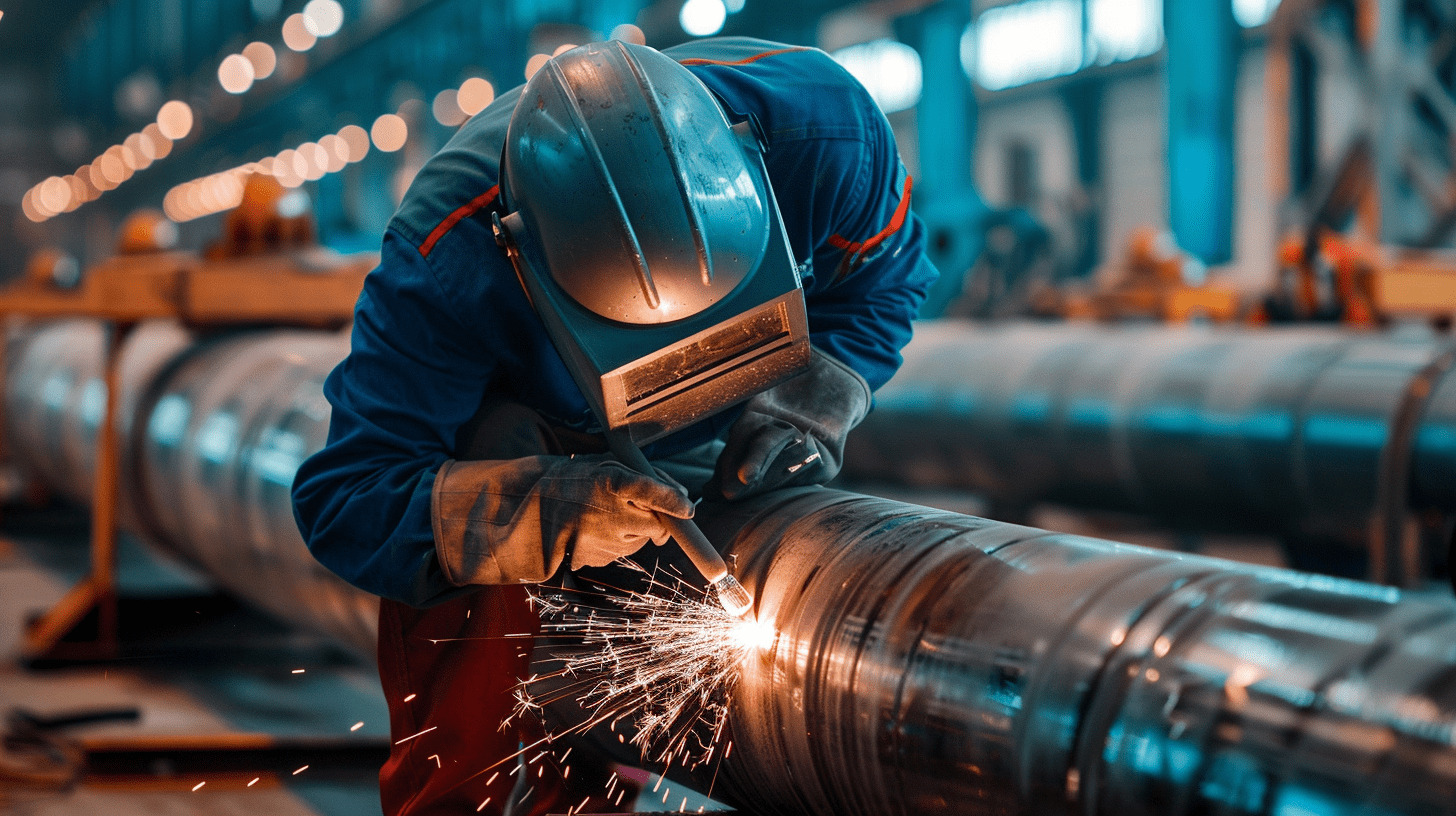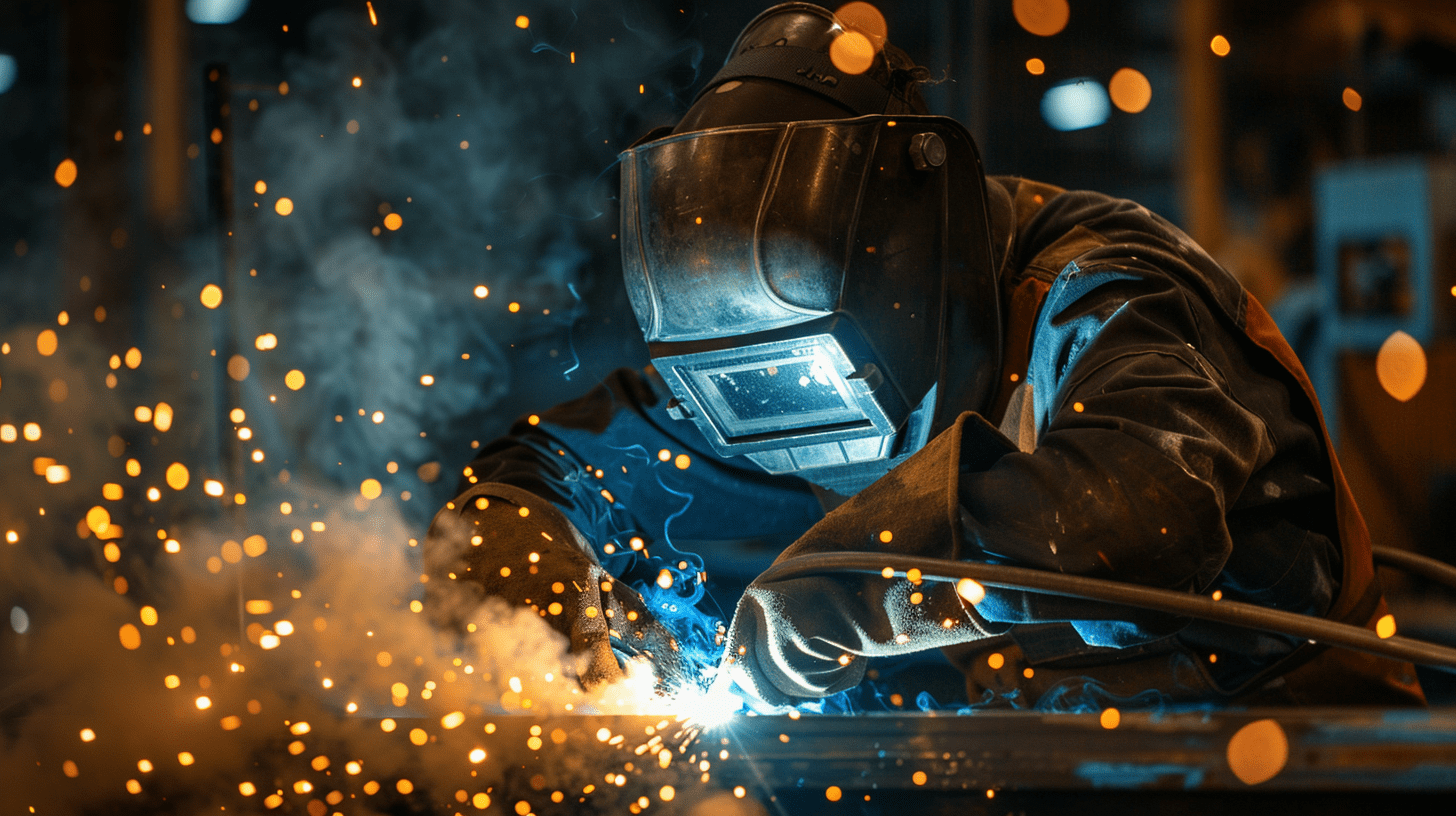Introduction
Pipeline welding is often seen as a simple process of fusing two section of pipes together. However, pipeline welding is a difficult process as it includes ensuring the stability and strength of the designed system to handle extreme pressures and environments. It requires a strong weld that can prevent leaks, corrosion and bear fluctuations in temperatures. As pipelines are used in non-negotiable industries such as energy, water supply and manufacturing, it is important to use correct type of welding technique to create the weld and ensure safety and longevity of the pipelines.
Type of Welding Methods Used for Pipeline Welding
There are numerous methods to weld the pipelines, each suited to a specific material, environment or individual project requirement. Some of the most common methods used are as follows:
- MMAW Method: MMAW stands for Manual Metal Arc Welding commonly known as Stick Welding. It is a manual process that uses consumable electrodes. The process begins when this electrode starts melting and the flux around it forms a gas shield to protect the weld from contamination. This process is cheaper, cost-effective and ideal for medium and small-scale pipeline projects and is also suitable for remote and outdoor locations. The two main limitations of this method are that it is a time taking process as the quality of weld depends on the skill of the welder and there is a frequent need to change the electrons which reduces the productivity of the welder.
- TIG Method: TIG stands for Tungsten Inert Gas commonly known as Gas Tungsten Arc Welding (GTAW). It is a non-consumable process that uses tungsten electrodes and a shielding gas to create the weld. The process also consists of a filler rod added manually to derive a clean and high-quality weld. This process is ideal for pipelines that demand high precision such as chemical or food industries. This process is also used to weld thin pipes and materials like aluminium and steel. The only limitation this process has is that it requires a high level of skill and is slower as compared to other methods which makes it less appropriate for large scale projects.
- GMAW Method: GMAW is also known as MIG welding which stands for Metal Inert Gas. In this process, the wire electrode and shielding gas are continuously fed to create the weld. It is a semi-automatic process which makes it faster from MMAW. This process is ideal for environments where speed and efficiency are required such as assembly of pipelines in manufacturing plants. The limitation of this method is that it is sensitive to environmental factors which makes it unapplicable for welding outdoors or in harsh conditions.
- Flux-Cored Arc Method: FCAW is a similar process to GMAW but the major difference between them is FCAW uses a tubular wire filled with flux. This flux generates its own shielding gas when heated which makes it ideal for outdoor welding. This process has high deposition rates and is suitable for the welding of heavy-duty pipelines. This process is also ideal for welding thick materials. The only limitation of this method is that it causes spatters and requires more cleaning which slows down the overall welding process.
- SAW Method: SAW stands for Submerged Arc Welding. This process includes a layer of granular flux shielded by the weld pool under which the weld is created. This weld pool protects the weld from contamination. This process is widely used for automated welding systems such as large-diameter pipelines and thick-walled sections. The biggest limitation of this method is that the position of the weld is only suitable for flat or horizontal welds. It cannot be used for vertical or overhead welding.
Aspects to be Considered While Choosing the Correct Method
There are a variety of methods used in the welding of pipeline industry. However, it is important to choose the correct method of welding based on the following aspects:
- Type of Material: It is important to consider the type of material which needs to be welded. Some of the commonly welded materials are carbon steel, stainless steel, and non-ferrous alloys. Certain types of materials require specific kinds of methods to be welded easily.
- Size and Thickness of the Pipe: It is important to keep in mind the size of the pipes to be welded while selecting the welding method. For example, thicker pipes may need methods having high penetration capabilities.
- Position: It is important to know the position of welding such as flat, vertical, horizontal or overhead. Those methods determine the types of welding process that should be used.
- Quality: The quality and appearance requirements should be assessed before choosing the welding type. For example, if the requirements are clean and precision, methods like GTAW can be ideal for welding.
- Efficiency and Speed: Along with the quality, efficiency and speed of the project should also be considered while choosing the correct method. All these methods vary in terms of efficiency and speed from one another.
- Environmental Conditions: Methods like FCAW or SAW are more recommendable while welding outdoors or in difficult environmental situations as these methods are less prone to wind and weather.
Take Away
This is the brief explanation about different types of welding methods used in the pipeline industry, their advantages and limitations. The factors that should be considered while choosing the correct methods are also stated. We hope this information will be effective for you. Please let us know through your valuable feedback and the suggestion in the drop box.




